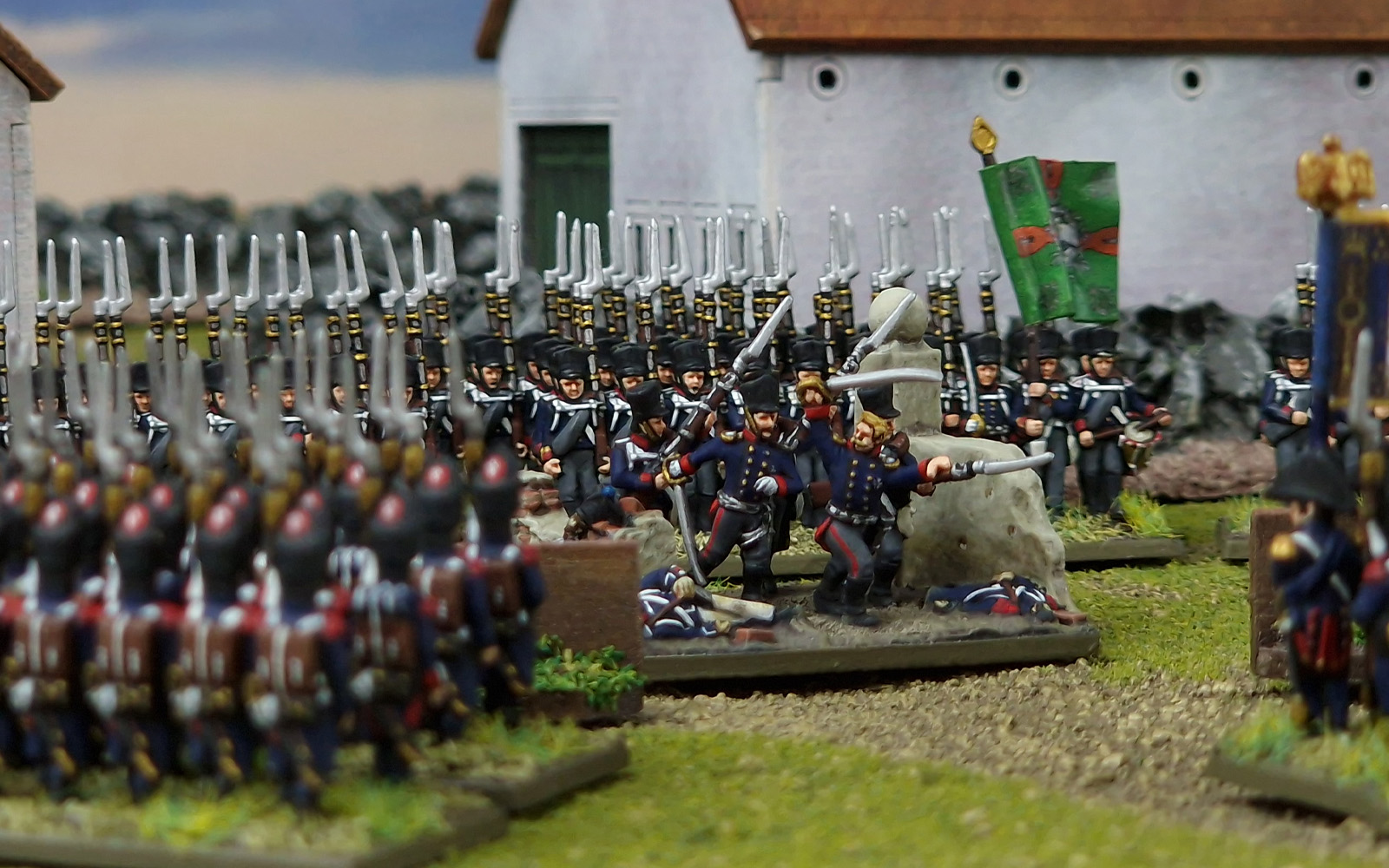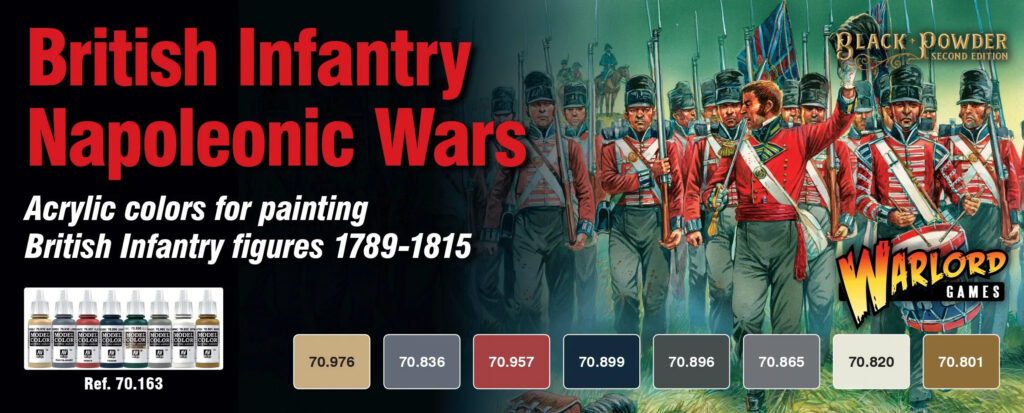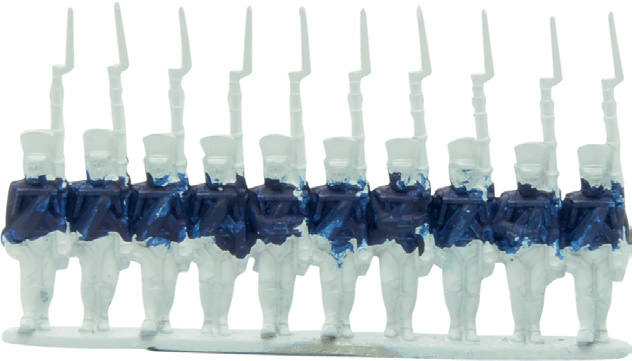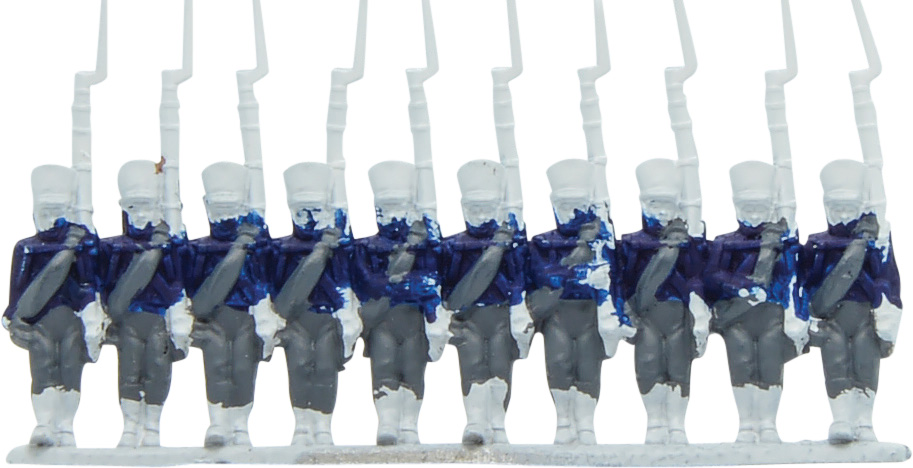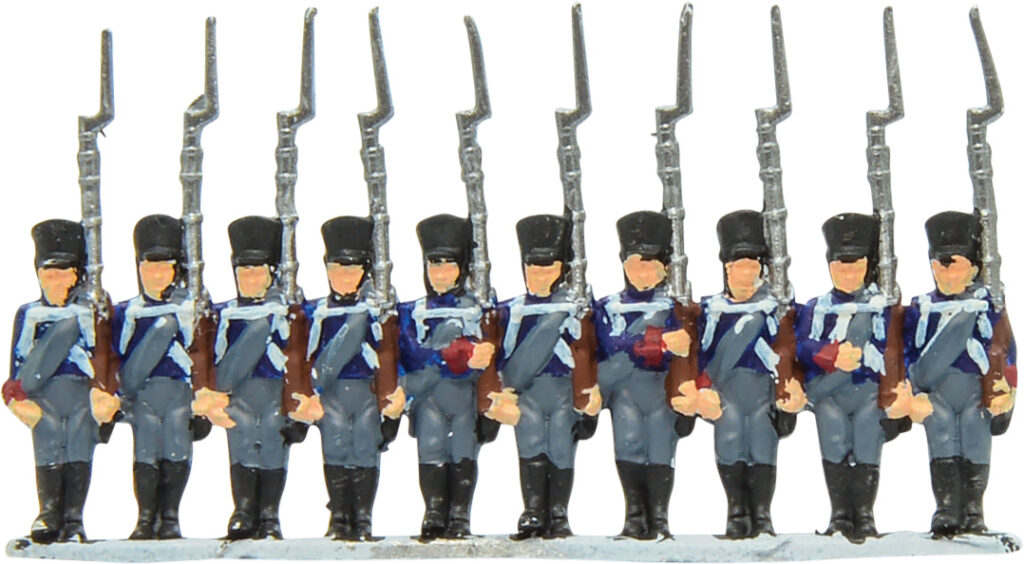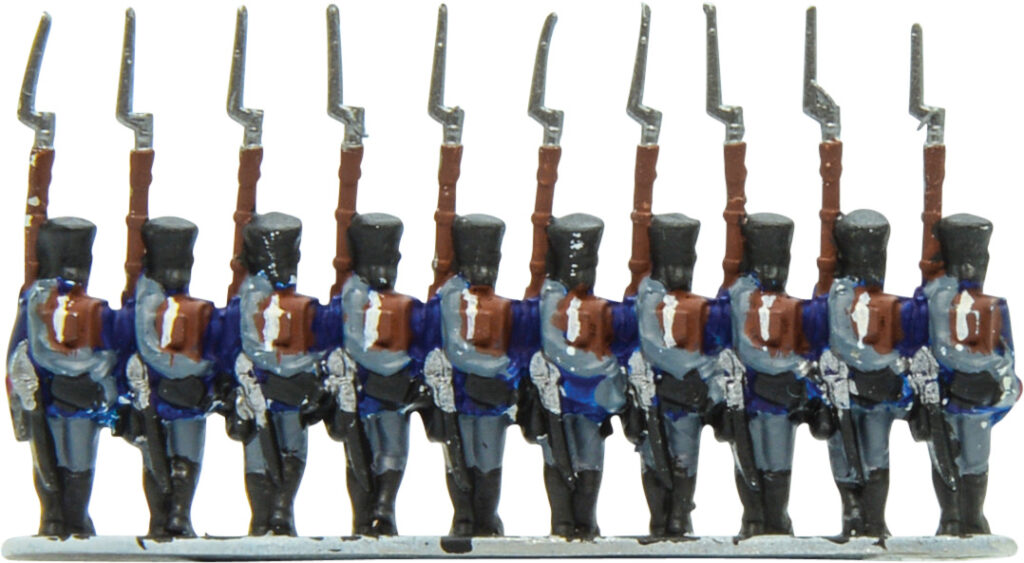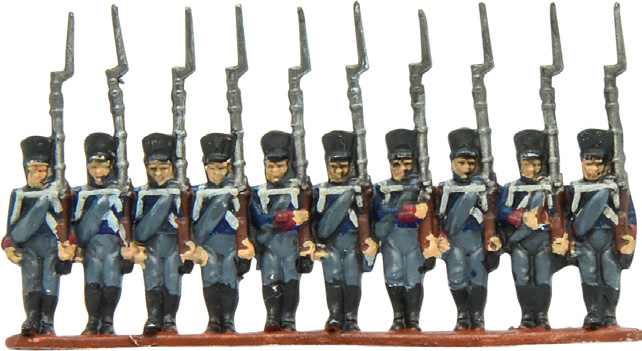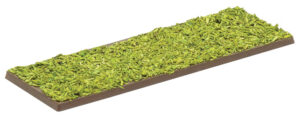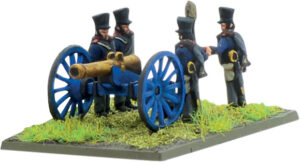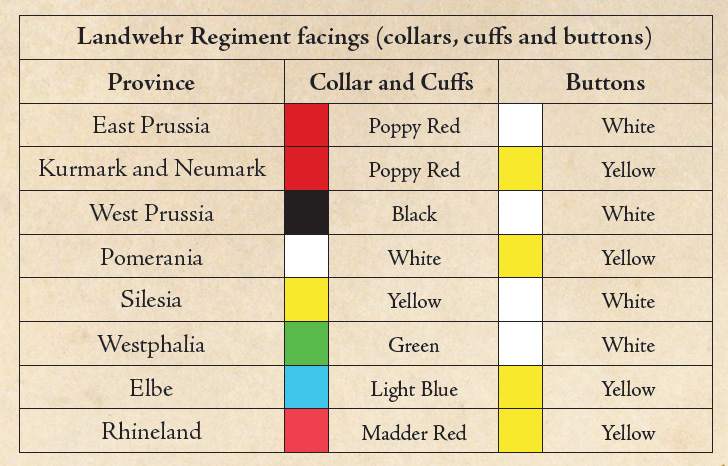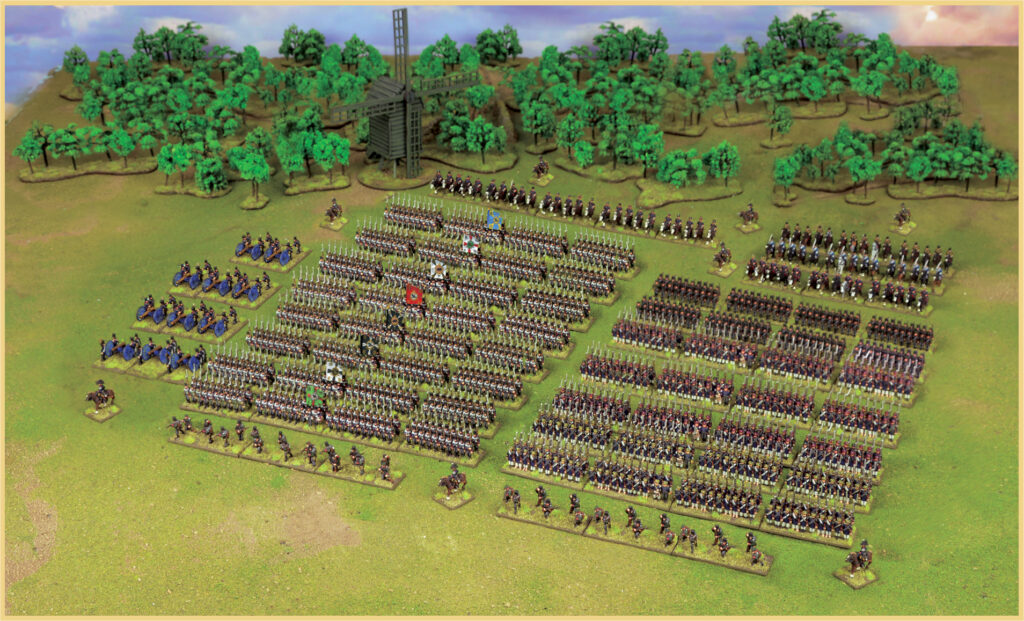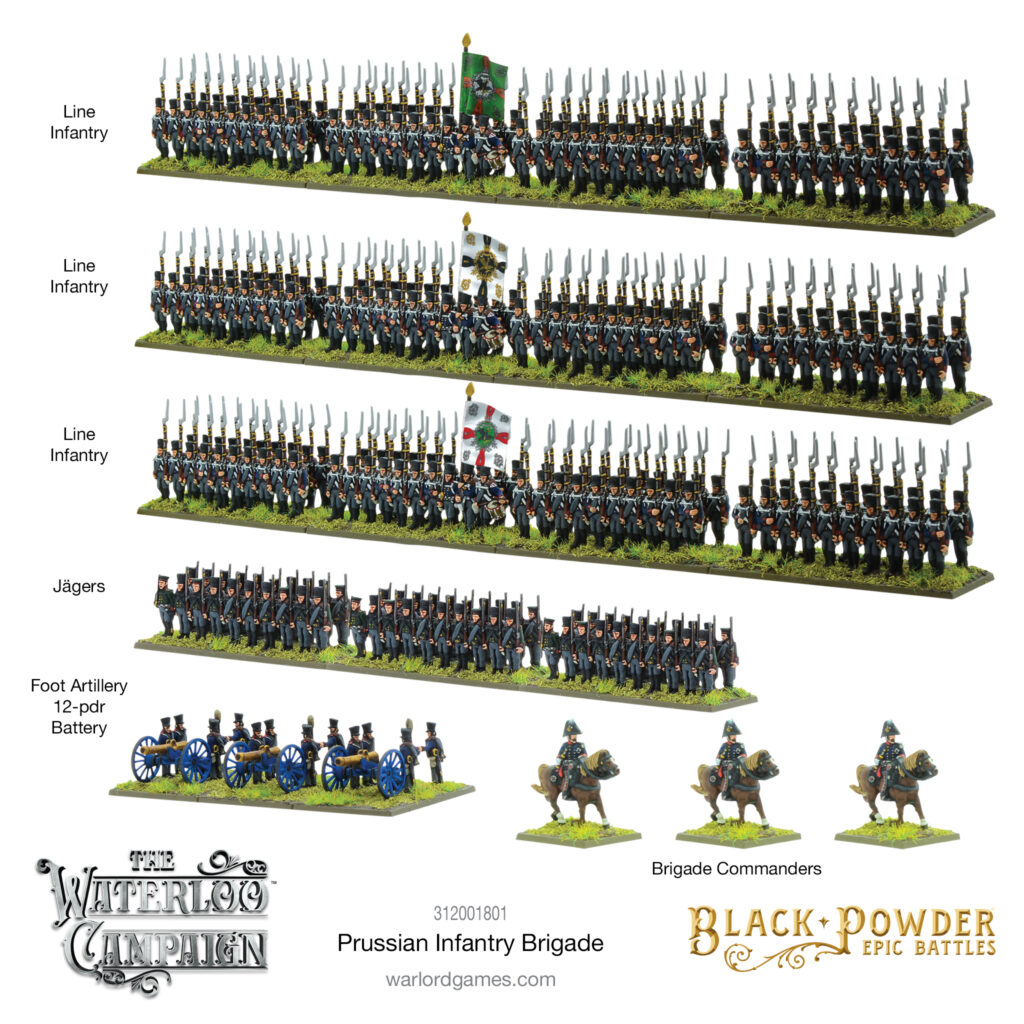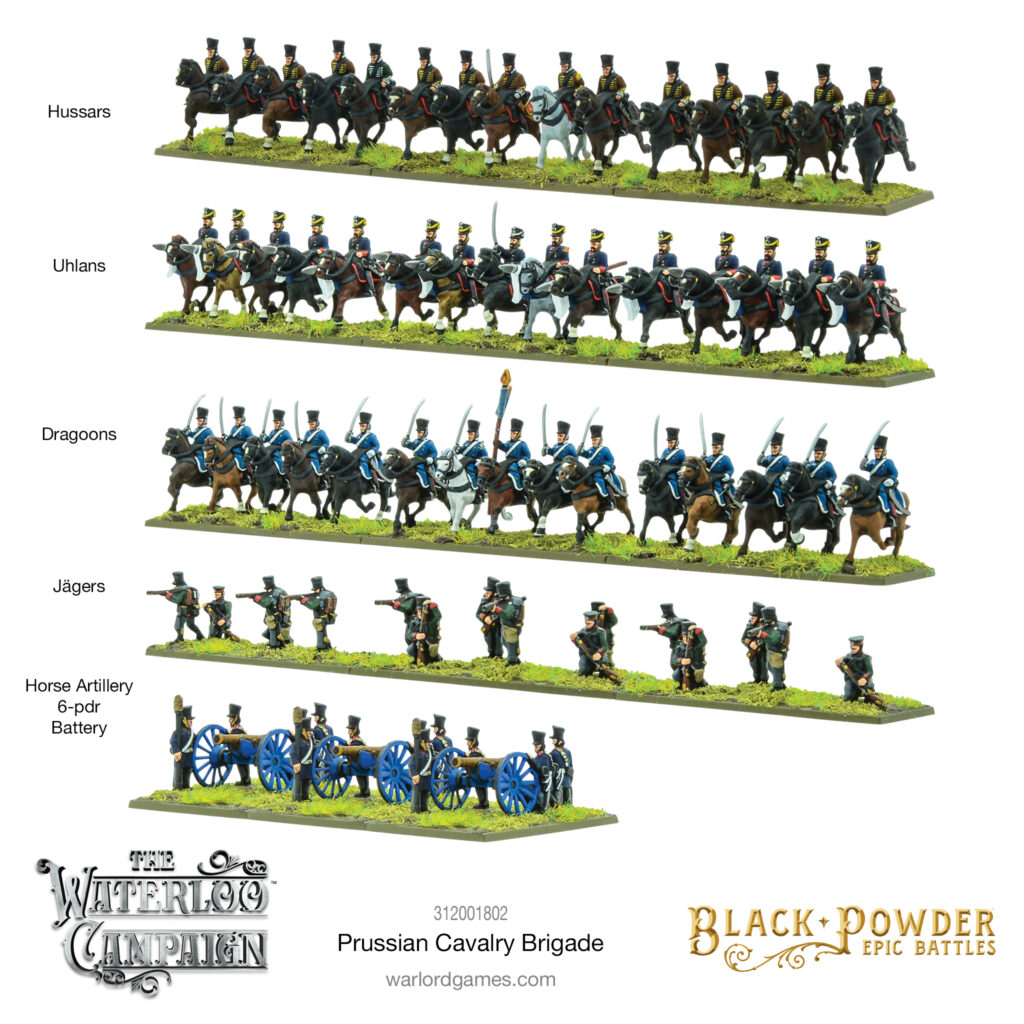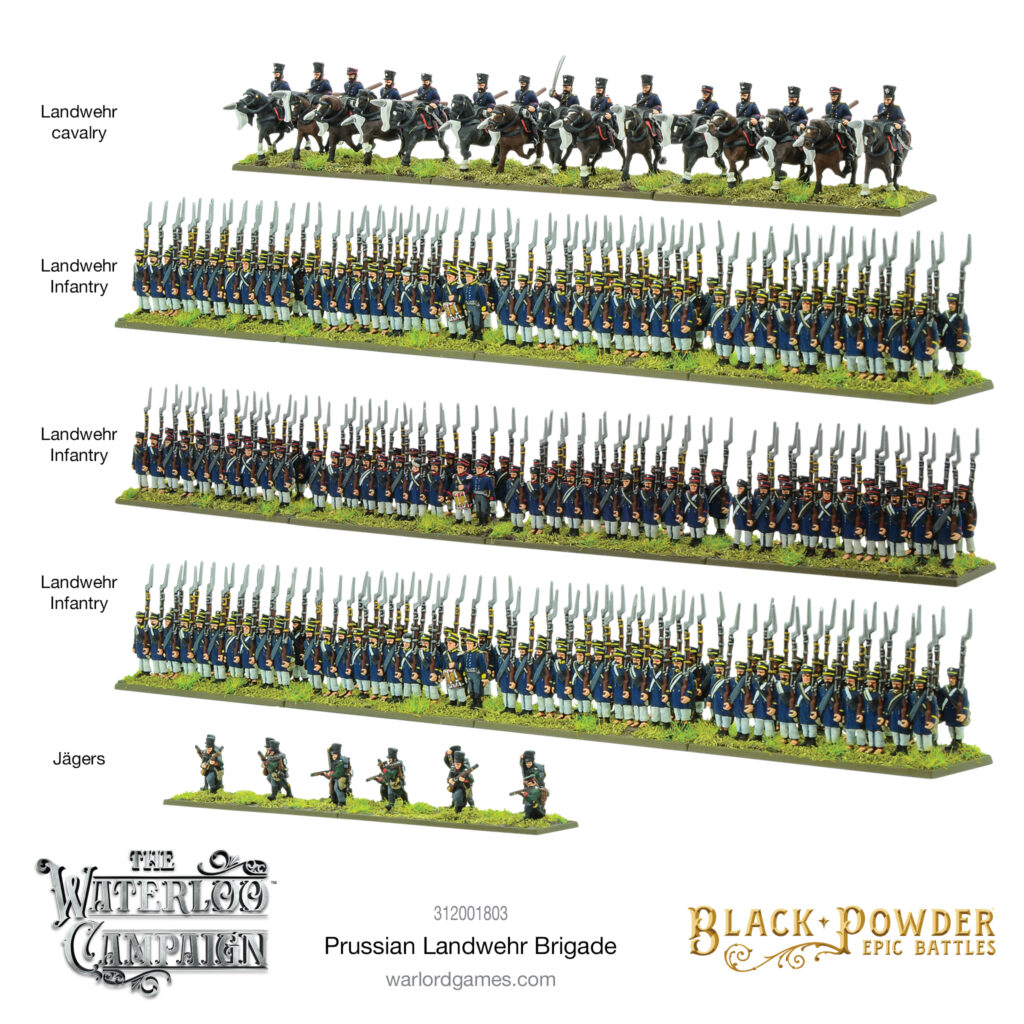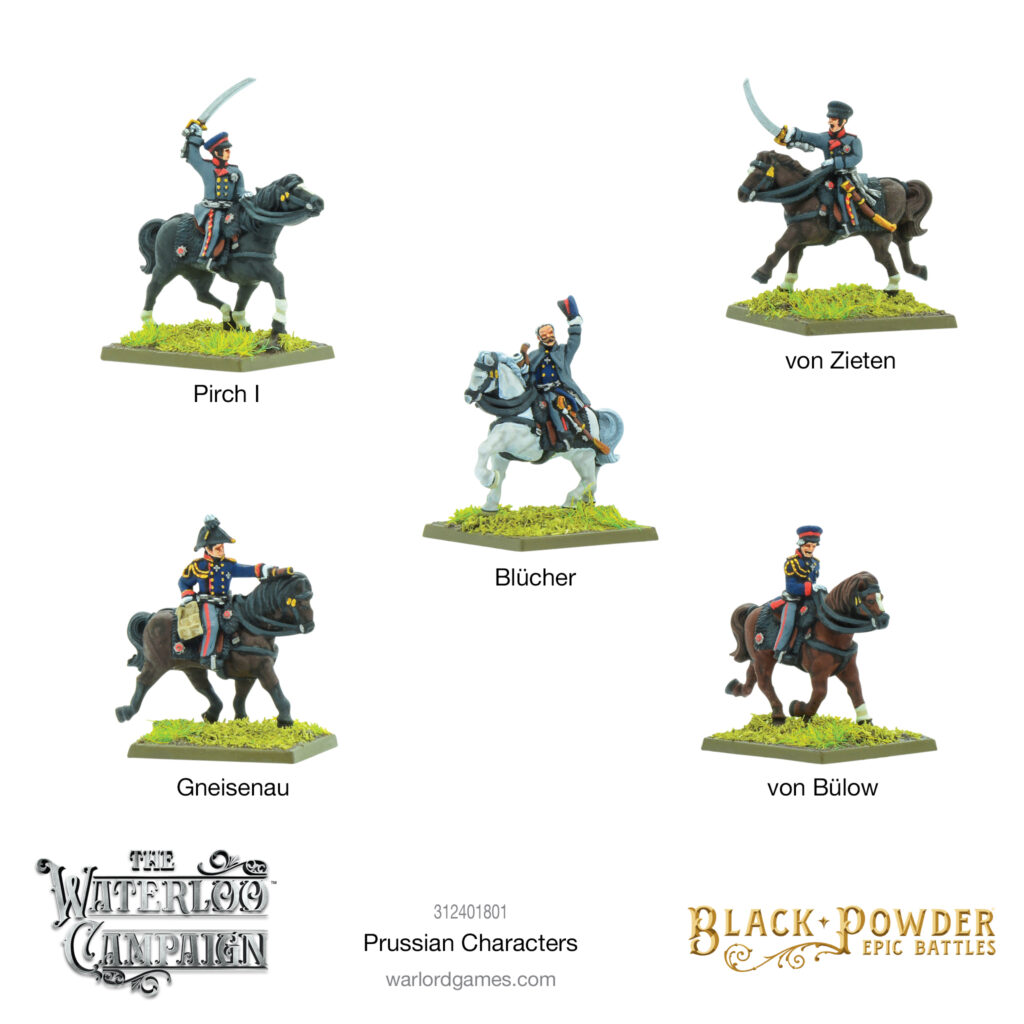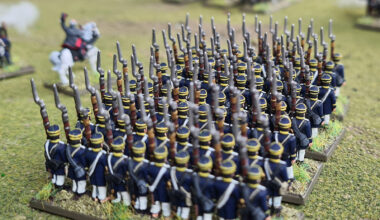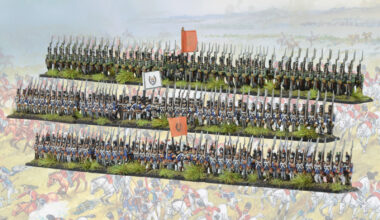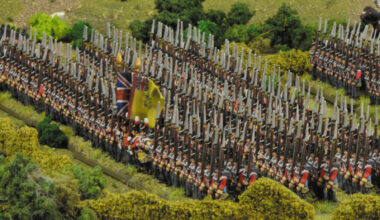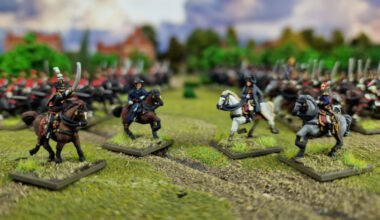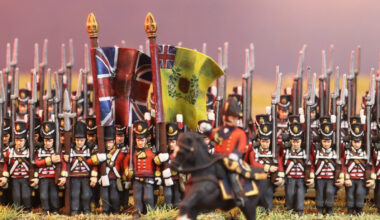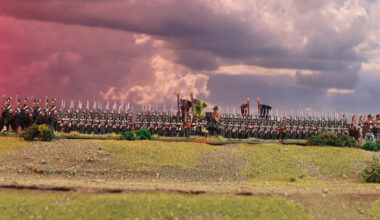This guide provides a method of painting your Prussian Epic Battles: Waterloo miniatures quickly and effectively, getting them from the workbench to the tabletop battlefield in next to no time. What’s more, these simple techniques will make sure your new models ably hold up to scrutiny. The guide assumes you have access to some basic colours as well as some specific colours.
It is quickest to paint all the models in a unit in one go, applying each stage to them all before moving on to the next stage in a technique called ‘batch painting’.
Happily enough, the Prussian Army shares many colours with its British allies, thus the British Napoleonic Paint Set is an ideal beginning, with a couple of additions. Where we have used paints not featured in this paint set, we have provided links for convenience.
Step 1: Block Colours
After carefully removing the strips of infantry from their frame, apply an undercoat with Army Painter White Spray Primer. Then paint all the jackets with (899) Prussian Dark Blue. Be as neat as you can but don’t worry about getting blue onto other parts as they will be painted over in later stages.
Paint all the trousers with (836) London Grey. Be careful not to get any grey onto the blue jacket area. While you are already using the grey paint, paint the blanket roll across the chest too. After applying these two big blocks of colour, it’s just a matter of adding details.
Step 2: Details
From this point on more care should be taken not to let paint stray into unintended areas. Paint the whole musket Wood Brown followed by picking out the barrel, firing mechanism and bayonet in (865) Oily Steel. After that, paint the hands and face with Caucasian Skin.
Paint the hat (shako), boots, sword scabbard, powder box, and bag with Pitch Black. Then carefully pick out the bayonet guard and tip with (865) Oily Steel.
Very carefully paint all the leather straps, buttons and lace on the jacket in (820) Off-White. After that, the facings (cuffs and collars) can be painted to match your chosen regiment (see below) in this example it is (926) Red. Finally, paint the backpack Wood Brown.
Step 3: Shading Wash
For this, you will need Army Painter Dark Tone Quickshade. However, as the detail on the miniatures is so small, the wash will need to be ‘thinned’ with either water or, ideally, Army Painter Quickshade Wash Mixing Medium. Mix it roughly two parts Dark Tone to one part mixer and apply over the whole strip, taking care not to let it ‘pool’ too much in any one area, and leave to dry. Lastly, paint the integral base with Wood Brown.
Step 4: Basing
Paint the whole base Wood Brown. Once dry, the strips can be stuck to their base. Once that is dry, apply a layer of PVA glue to the top of the base and cover with Army Painter Battlefield Grass. Once dry and the excess shaken off, the unit is ready to have its flags attached.
What Next?
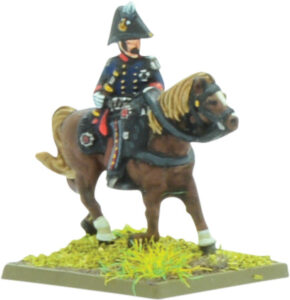
The preceding guide is only intended to get your models painted quickly. However, there is a rich diversity in the detail of Napoleonic uniforms – much more so than can be addressed here. Thankfully, there is a wealth of information available online about the different uniforms, which is especially useful when painting your cavalry as the different units can be quite varied.
Cavalry and Commanders
With the basic colours already mentioned, you can paint the horses in variations of (820) Off-White, (836) London Grey, Pitch Black, or Wood Brown. Note that in the main bugler horses will be white.
Artillery
Artillery crews are painted identically to the infantry. The wooden carriage can be painted with (930) Dark Blue, while the barrel is painted (801) Brass and the wheel rims Pitch Black.
Regiment Facings
The colour of the Landwehr shoulder boards denote which Battalion is in a three Battalion Regiment:
1st Battalion: White
2nd Battalion: Red
3rd Battalion: Yellow
Line infantry shoulder board colours work different to the Landwehr. Each regiment has a line number and a provincial number – for example, 2nd line regiment (1st Pomeranian):
1st Provincial: White
2nd Provincial: Red
3rd Provincial: Yellow
Collecting Prussians in Black Powder Epic Battles: Waterloo
Blücher’s Prussian Army starter set provides a solid core of a Prussian army serving in the Hundred Days campaign – 8 units of line infantry, 5 units of Landwehr infantry, 2 units of ranked up Jägers, 2 units of skirmishing Jägers and units of each type of cavalry (Landwehr cavalry, Dragoons, Uhlans, & Hussars), ably supported by 11 pieces of artillery and 8 mounted brigade commanders. Also included is an MDF Windmill and a bespoke A5 softback rulebook packed with Napoleonic-specific content.
You can expand a burgeoning collection with additional brigades of infantry, cavalry and Landwehr, and don’t forget those all-important commanders – our boxed set features Blücher, Gneisenau, von Bülow, von Zieten & Pirch I.
